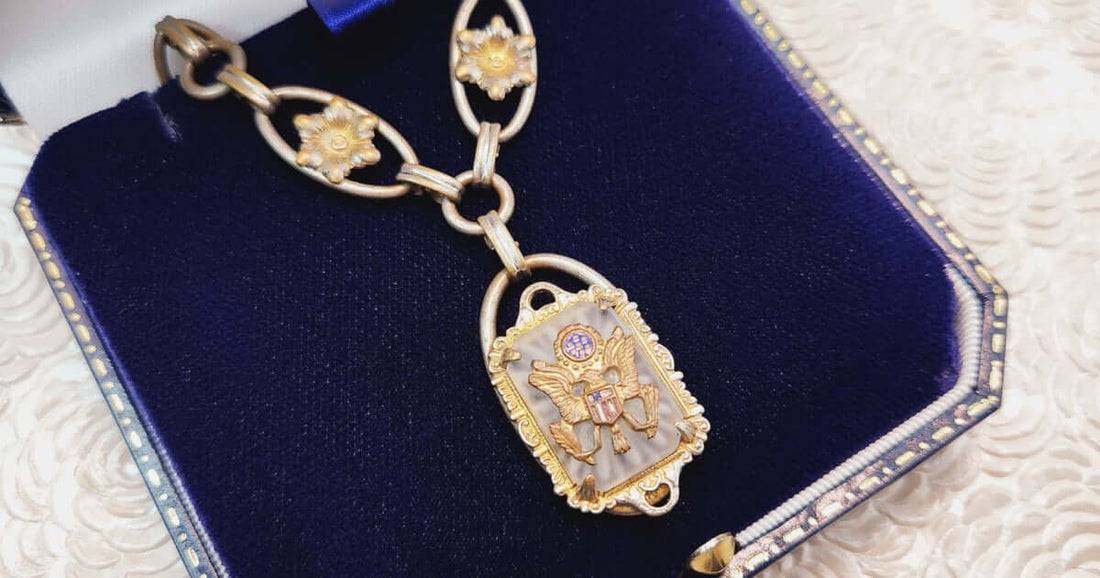
Style in Strength: Patriotic Jewelry of World War II
by Kat Paulick
The “V for Victory” campaign began in 1941, as fatigue set in from years of a harrowing war. Belgian refugee Victor de Laveleye proposed the letter “V” as a rallying emblem for the Allied forces and encouraged citizens to draw it everywhere. “V” not only stood for the French “Victoire” but for the Dutch “vrijheid” (freedom) and the English “victory.” De Laveleye explained on his radio broadcast that “the occupier, by seeing this sign, always the same, infinitely repeated, understands that he is surrounded, encircled, by an immense crowd of citizens eagerly awaiting his first moment of weakness.”
The “V” began to appear, written with chalk on the boots and helmets of soldiers, flashed with a hand gesture, and printed on stamps and pamphlets. Winston Churchill magnified the campaign by using a hand gesture, with his middle and index fingers forming a V, when addressing his fellow citizens. Soon enough, the “V” was everywhere throughout Europe and the United States – including on pins and jewelry.
Patriotic jewelry was hugely popular in the United States during World War II. Because of rationing, new jewelry was scarce, but victory pins could add style and patriotism to an ensemble. The pins featured the letter “V” and often included the colors of the American flag. They were commonly made from unconventional materials – most metals were required to manufacture tanks, airplanes, and weapons, so jewelry was often created from materials such as Bakelite, enamel, wood, or celluloid. Higher-end pieces were made from sterling silver, which wasn’t used in manufacturing. In addition to the “V,” wings and flags were popular motifs.

WWII Sweetheart Bracelet. Image: The Gemmary
Sweetheart jewelry, sold to soldiers to send home to their wives, mothers, or loved ones, was prevalent during World War II. Wearing sweetheart jewelry allows civilians to show support for their enlisted family members and feel connected to them while they serve overseas. Although the custom began during the First World War, it gained popularity during World War II. Hearts were a popular motif for these pieces, including ribbons and bows in patriotic colors.

1940s Hickok WWII Bomber Airplane Tie Clip. Image: The Gemmary
A blue star indicated a son or husband in service on a red-bordered white background. A gold star indicates a loved one killed in battle. Pearls also became a popular way to commemorate those lost in the attack on Pearl Harbor.

During the war, many sacrifices were required of civilians. Sweetheart and victory jewelry became a way for people to feel connected to one another and to garner strength and morale for the ongoing fight. The cultural significance and distinctive style of World War II jewelry make it a highly sought-after collector’s item.

